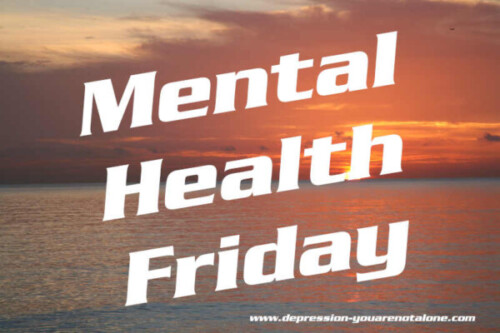Mental Health Friday 2023-08-25
On Mental Health Friday, we post, in alphabetical order, one per week, information on mental health disorders. Mental Health Friday is for informational purposes only, and is in no way meant to diagnose, treat or cure any disease. Please do not self diagnose and seek professional help for what ails you.
Link: FindTreatment.gov is an online source of information for persons seeking substance use and/or mental health treatment facilities in the United States or U.S. Territories.
.
Narcolepsy
Editorial Team
Narcolepsy is a neurological disorder that affects a person’s ability to regulate their sleep-wake cycle. It is characterized by excessive daytime sleepiness, sudden and uncontrollable episodes of falling asleep, and disruptions in REM (rapid eye movement) sleep. Narcolepsy is thought to be caused by a deficiency of a neurotransmitter called hypocretin (also known as orexin), which plays a key role in regulating wakefulness and sleep.
Here are the main aspects of narcolepsy:
- Excessive Daytime Sleepiness (EDS): People with narcolepsy experience an overwhelming and persistent urge to sleep during the daytime, even after getting adequate nighttime sleep. This excessive daytime sleepiness can lead to difficulties in staying awake and alert, making it challenging to perform daily activities, work, and engage in social interactions.
- Cataplexy: Cataplexy is a distinctive symptom of narcolepsy and involves sudden, temporary muscle weakness or paralysis triggered by strong emotions such as laughter, surprise, or anger. During a cataplectic episode, the affected person may experience slurred speech, drooping facial muscles, buckling of the knees, or even collapse to the ground. Cataplexy is caused by a loss of muscle tone and is often misdiagnosed as fainting.
- Sleep Paralysis: Sleep paralysis occurs when a person is temporarily unable to move or speak while falling asleep or waking up. It can be accompanied by vivid hallucinations and a feeling of pressure on the chest. Sleep paralysis is a normal phenomenon that happens to everyone during certain sleep stages, but it can be more frequent and intense in individuals with narcolepsy.
- Hypnagogic and Hypnopompic Hallucinations: These are hallucinations that occur during the transition between wakefulness and sleep (hypnagogic) or between sleep and wakefulness (hypnopompic). These hallucinations can be visual, auditory, or tactile, and they often feel very vivid and realistic.
- Disrupted REM Sleep: Narcolepsy involves disturbances in the normal sleep cycle, particularly in REM sleep. People with narcolepsy often enter REM sleep very quickly after falling asleep, and they may experience dream-like states and muscle paralysis associated with REM sleep at inappropriate times, such as during wakefulness or while falling asleep.
- Fragmented Nocturnal Sleep: While people with narcolepsy may struggle with excessive daytime sleepiness, their nighttime sleep can also be disrupted. They may experience frequent awakenings during the night, have difficulty maintaining a deep sleep, and have an increased frequency of nocturnal awakenings.
Narcolepsy can have a significant impact on a person’s quality of life, leading to difficulties in education, employment, and personal relationships. The disorder is typically diagnosed through a combination of clinical evaluation, sleep studies (polysomnography and multiple sleep latency tests), and assessment of symptoms.
Treatment for narcolepsy usually involves a combination of lifestyle adjustments, behavioral therapies, and medications. Medications such as stimulants, selective norepinephrine reuptake inhibitors, and sodium oxybate (which can improve nighttime sleep and reduce cataplexy) are commonly prescribed to manage the symptoms of narcolepsy.
It’s important to note that narcolepsy is a lifelong condition, but with proper management and support, individuals with narcolepsy can lead fulfilling lives and mitigate the impact of their symptoms. Nothing herein is intended to diagnose, treat or cure any disease. Please do your research and seek professional advice before using any information.

